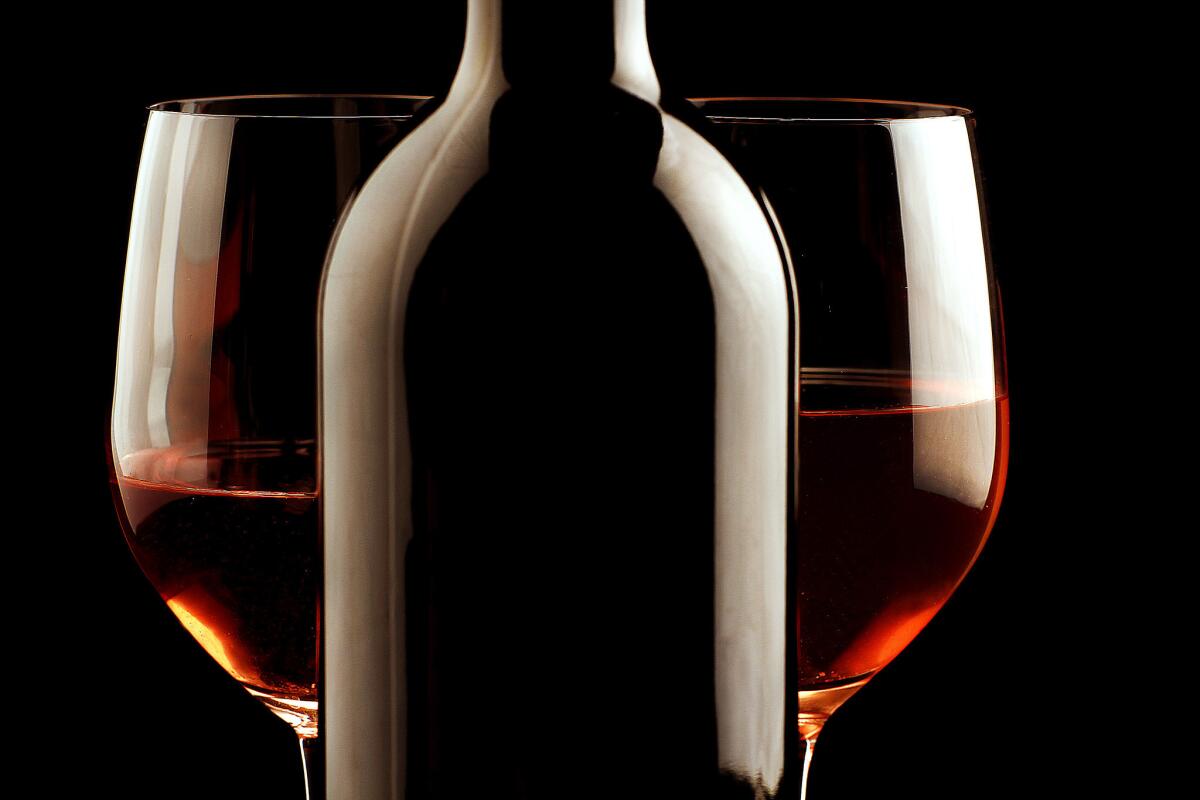Readers weigh in on restaurant wine corkage policies

- Share via
Saturday’s story on corkage policy brought in a serious pour of comments and emails from readers.
A reader from Villa Park, who prefers to remain anonymous, says that he occasionally brings his own wine to restaurants and that they tend to be pretty good bottles. But, he wonders, why he should have to pay a two or three times markup on a wine from the list just because the 2007 Silver Oak he might have brought was already on the restaurant’s wine list. He feels the $15 or $30 corkage fee is more than enough to cover the “shame” the waiter might have had to endure for popping the cork on his lower class wine.
Good points -- but that two or three times markup he mentions is a bit behind the times. Markups are more like two and a half times wholesale (not retail) and on up to four times. True, waiters are often less than enthusiastic about opening a cheap bottle of wine.
But add the cost of the corkage onto the price of that bottle, and cheap wine plus corkage is not always the bargain it may seem. You could spend that same $30 or $40 on something from the list and get a better wine in the end. Part of what you’re paying for when you dip into a restaurant’s wine list is the expertise of the person who put the list together.
That’s not saying that every wine list includes wonderful bargains at the low end. Some restaurateurs cede the duties to a distributor and the temptation is, of course, to pad the list with plonk that’s otherwise hard to sell.
I feel strongly that customers would order more wine -- and better wine - -if restaurants kept prices more reasonable. The cost of wines by the glass versus craft beer is one reason some are leaning toward beer with dinner.
And that’s precisely why some restaurateurs have introduced wines in keg. They can offer the wines at a lower cost and ordering is less intimidating. I wrote a story about that recently.
For every manager and wine buyer like Taylor Parsons at Republique -- who feels every bottle of wine should be served with the same attention as the most expensive bottle on his list -- there’s restaurant that treats BYOB bottles with less respect.
Reader and wine collector Jim Ruxin of Brentwood complains that “at most restaurants other than the city’s best, the servers treat outside bottles like they were house plonk and fill the glass too high. They need to be prompted about smaller pours out of the bottle, so accustomed are they to trying to sell more of their own wine. Very few servers at mid-range restaurants have any sense of the notion of letting a wine breathe, which is often needed with higher value bottles brought in from the outside. Decanters are often scarce.”
Overfilling wine glasses is one of my pet peeves at restaurants, so much so that I often just tell the waiter that we’ll pour it ourselves. That way we control the bottle -- and anybody at the table who’s a quick drinker doesn’t get more than their fair share of the wine.
Connie Brescher of Port Hueneme writes, “I understand the point you are making regarding corkage fees in fine restaurants but honestly, you and I know that the profit margin for most restaurants is not in the food but in the signature cocktails, wine, etc.”
“Why does the customer/patron have to be charged exorbitant corkage fees or pay 4 times the amount for a bottle of wine than the retail price -- not fair! I would rather pay for good food, go to a restaurant with a reasonable wine list or pay a low corkage fee or none at all.”
She’s put her finger on the conundrum everybody in the business knows is true. Drinkers subsidize the cost of the food at restaurants -- and alcoholic beverages fuel much of a restaurant’s profit.
Although many wine lovers tote bottles to high-end restaurants in order to afford to drink a beautiful wine with their meal, reader Ed Wood tends to bring wine to less expensive restaurants.
“I’ve been to Lucques,” Wood comments, “and prefer to enjoy the adventure of their wine list. On the other hand, I also go to a less expensive local Italian restaurant near me in the ‘burbs and bring my own. That is because their wine offerings are the usual mass market stuff provided by the distributors. Not saying that all of it is bad, or even most of it, but it is too familiar.”
Other readers pointed out that it’s often the restaurants with the most limited and boring — and overpriced wine lists — that charge a high corkage. And some of them don’t even have good glassware. Or staff who know how to pour wine.
So what are you exactly paying for?
Jim Ruxin again gets it right: “My point is that high corkage does nothing to develop loyalty among wine-loving diners. And loyalty is the single most important factor in sustaining a restaurant over time.”
Anybody listening out there?
Follow @sirenevirbila for more on food and wine.
More to Read
Eat your way across L.A.
Get our weekly Tasting Notes newsletter for reviews, news and more.
You may occasionally receive promotional content from the Los Angeles Times.







